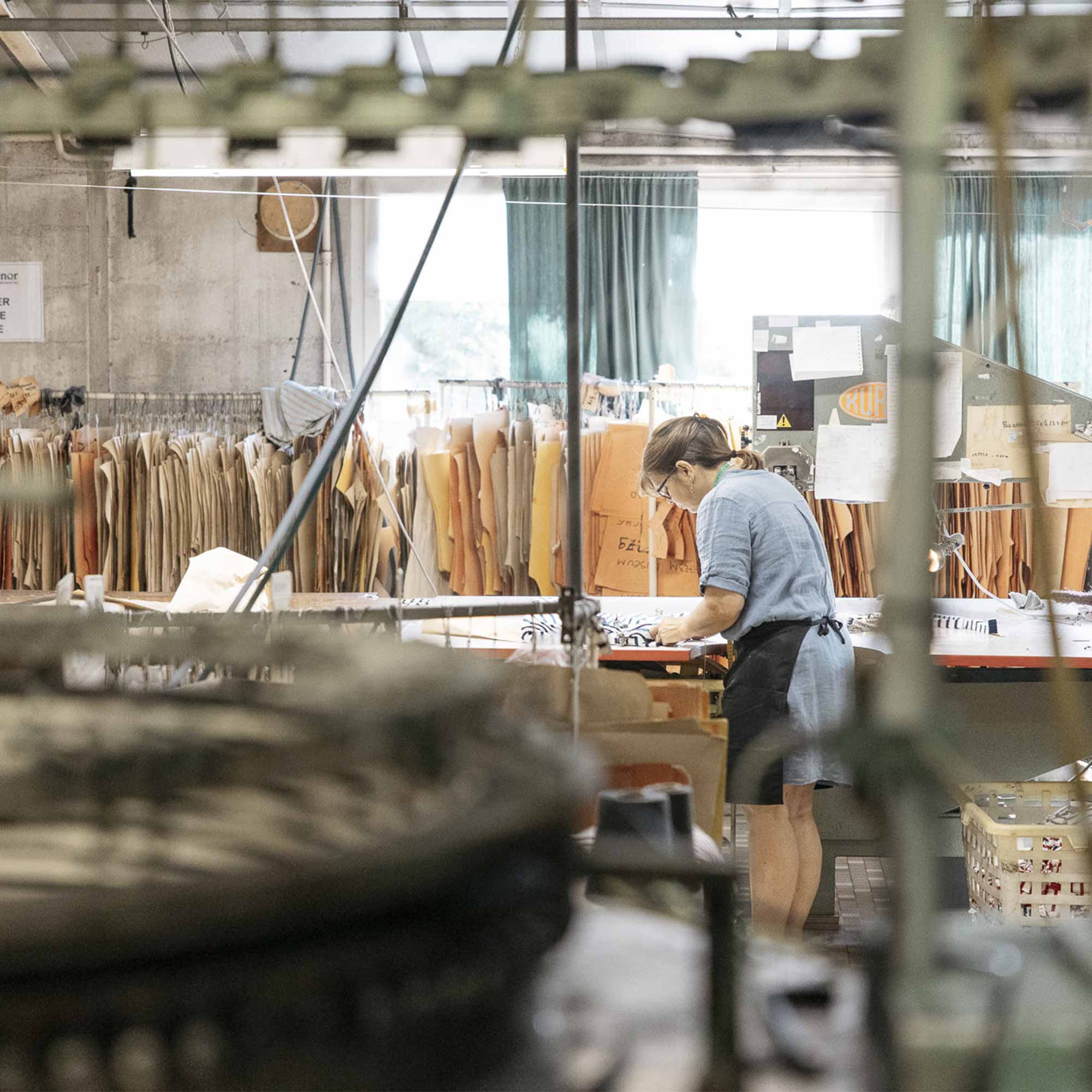Our marinière for men
These constraints explain the technical characteristics that define the royal sailor's sailor's cap: a "boat" collar that is quite open, 7/8th sleeves that stop a little above the wrist, a slightly loose body and slits so that the sailor's cap falls well on the hips.
There are therefore (at least) 2 ways to wear this sailor's cap:
- the "purist" way: go for your size, like Paul on the pictures, and assume the sleeves are a bit short, and the fit is close to the body. The sailor's jacket stops in the middle of the buttocks.
- "oversize" fashion, very common among Japanese and in the air of time, at a time when we favor volumes: take a size above, to find the length of sleeves of a classic sailor (or a long-sleeved t-shirt lambda), more ease in the armpits, and a lot of fullness in the body. The length of the sailor will then cover a good part of the buttocks.
Création de notre marinière en maille Rachel
Cette marinière reprend le cahier des charges de la marine nationale que nous lui avons fourni des années durant.
Cette marinière est confectionnée dans nos ateliers de Guidel et de Quimper (comme tous nos vêtements, d'ailleurs) à partir d'un tissu en "maille Rachel". Cette maille Rachel ou "maille jetée" et une technique entre tricotage et tissage, qui permet de réaliser une maille "indémaillable". Depuis toujours, l'armée, et notamment la Marine Nationale, exige l'utilisation de matières robustes. Ce tricotage, complexe et solide, lui permette d'aquérir des qualités exceptionnelles tant sur sa durabilité; que sur sa souplesse.
Ce tissu est utilisé depuis des lustres pour la Royale, puisque, comme vous le savez sans doute déjà, le tricot de la marine nationale a été codifié par décret... en 1858.
Il a été beaucoup écrit sur la raison d'être du nombre de rayures sur le corps et sur les manches. Le décret de 1858 stipule en effet les éléments suivants : 21 rayures blanches larges de 20 millimètres et 20 ou 21 rayures bleu indigo larges de 10 millimètres sur le torse et le dos ; 15 rayures blanches et 14 ou 15 rayures bleues sur les manches. On a beaucoup dit que le nombre 21 faisait référence au nombre de victoires navales de Napoléon.
Nous allons démystifier ce nombre de rayures. En réalité, cette codification permettait 3 choses :
- de dessiner un tricot de corps avec des rayures placées, ce qui est plus élégant que des rayures continues. L'uniforme est souvent affaire d'élégance. Et la marinière française se distingue ainsi de la marine russe ;
- d'uniformiser la taille des rayures afin d'avoir des corps au diapason. C'est bien le rôle de l'uniforme.
- de réaliser un "dessin", c'est à dire un jeu de rayures, qui puisse correspondre au maximum de tailles imaginables : les grandes marinières et les plus petites auraient ainsi des rayures "placées" sans avoir ni trop d'uni, ni pas assez.



















